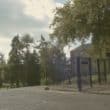The annual Perseid meteor shower is due to hit its peak this week, with a spectacular display in store.
And it looks as though the conditions should be favourable – with the best weather wise forecast across County Down.
Armagh Observatory says the nightly spectacle, experienced over the past few weeks, is one of the “best and most reliable meteor showers of the year!”
The world-renowned research institute is advising people of the best conditions for viewing.
From the end of July until now, sky-gazers have been treated to a fine display.
It peaks every year around August 12 and 13 – today and tomorrow – and, under ideal conditions, we could be witnessing up to 100 meteors an hour.
According to the Observatory, the weather is still reasonably mild, and the Moon – light from which often drowns out many faint meteors – is waning towards the New Moon on August 14, which means it should not interfere with the peak of this year’s shower.
Meteors, which are sometimes called ‘shooting stars’ — or ‘fireballs’ if very bright — are produced by small dust particles called meteoroids, with sizes ranging from millimetres up to centimetres or more, as they collide with the Earth’s atmosphere at speeds of typically several tens of kilometres a second, and burn up.
Although the Perseid parent body returns to the inner solar system every approximately 130 years, the comet itself was only discovered in 1862, and then re-observed during its last orbit around the Sun in 1992.
It is not expected to return until 2126.
Because the meteors you see are produced by collisions with the Earth’s atmosphere of meteoroids ejected from the comet many revolutions ago – well before any recorded observations of the comet – there is always the possibility of a surprise!
Those who wish to see a Perseid meteor should select a clear, dark observing site with as little moonlight or artificial light pollution as possible.
During August, soon after dark, the constellation Perseus can be seen rising low in the north east. Although Perseid meteors will appear to originate from this general direction, known as the radiant, the actual shooting star can be seen in any part of the sky.
For example, you may look at an angle of about 45 degrees away from the radiant, perhaps overhead or towards the north or east, whilst keeping the radiant near the edge of your field of view. If possible, look away from any nearby light pollution.
Always allow time for your eyes to become accustomed to the dark, and expect to wait 20 or 30 minutes before seeing your first meteor.
To avoid fatigue, wrap up warm and recline in a comfortable chair, under a rug or sleeping bag to avoid the cold.
Then all you have to do is take time to enjoy your view of the dark, night sky!
Read more news:
Dr Fee agrees to withdraw resignation and remain as GP
Omniplex screenings to ‘make cinema accessible to everyone’
Station’s pride at welcoming back special birthday boy Thomas
Community launches campaign for cover after GP resignation
Asda rubbish ‘rumour’ new store is planned for city site
Former hotel and night club site to be brought back into productive use



